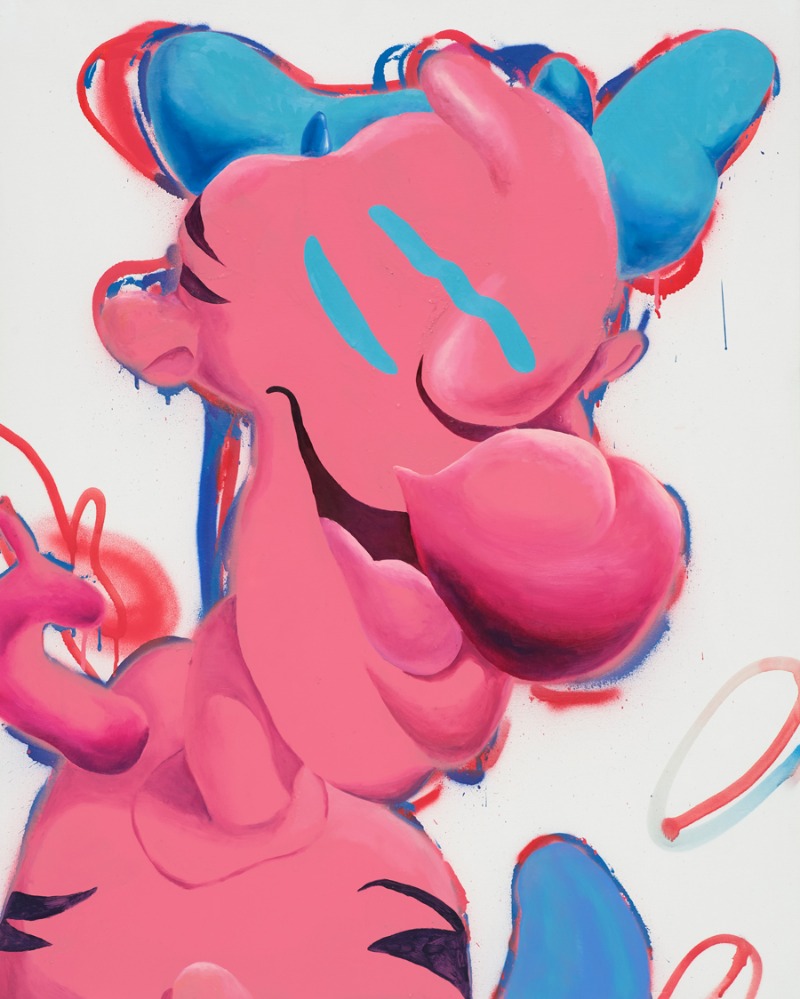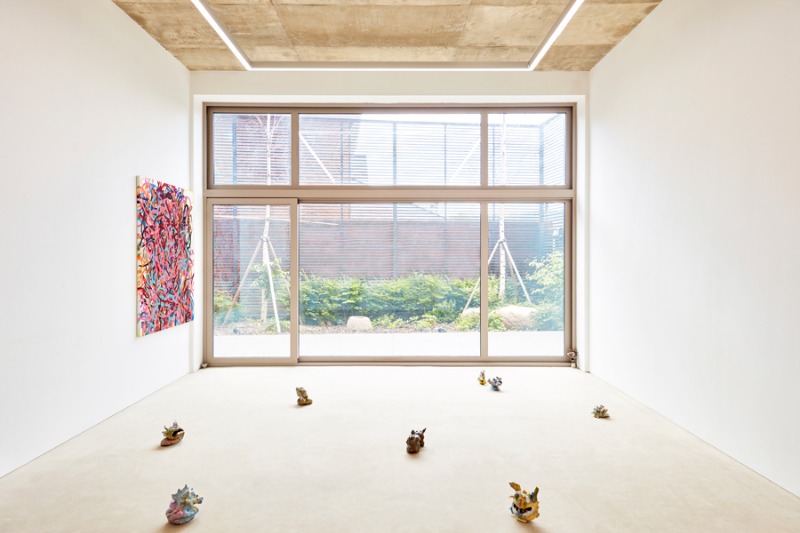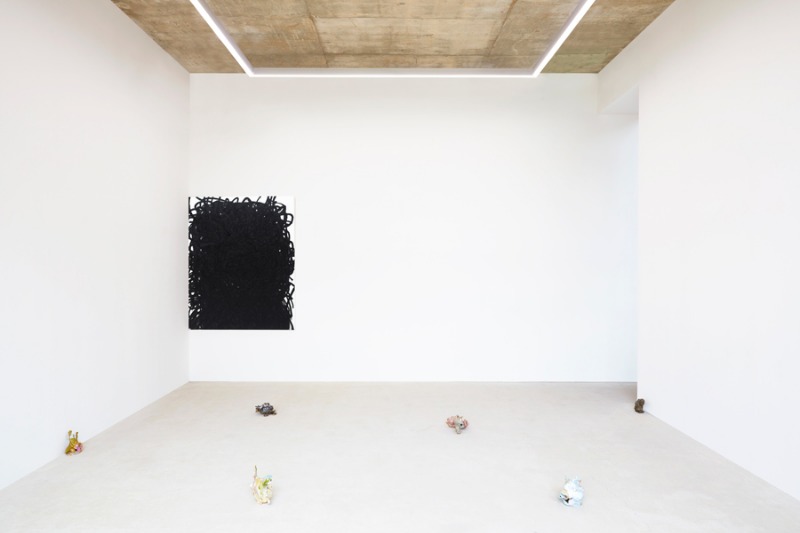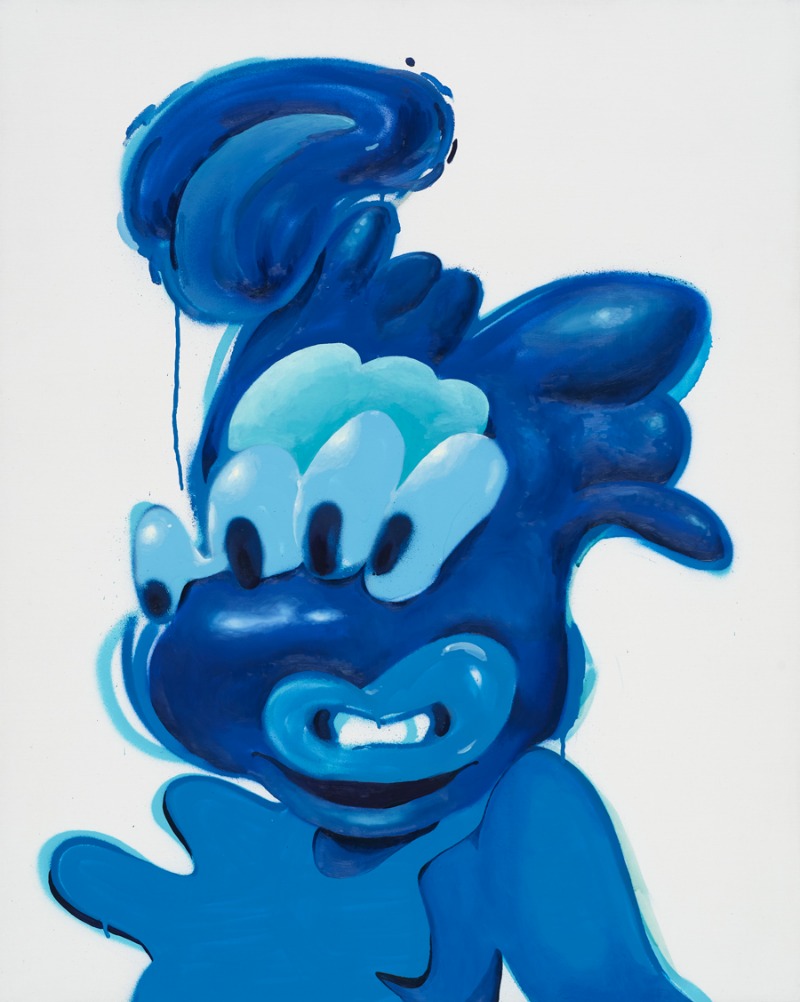
| Period| | 2019.06.20 - 2019.07.21 |
|---|---|
| Operating hours| | 10:00 - 18:00 |
| Space| | Gallery2/Seoul |
| Address| | 204, Pyeongchang-gil, Jongno-gu, Seoul, Republic of Korea |
| Closed| | Mon, Sun |
| Price| | Free |
| Phone| | 02-3448-2112 |
| Web site| | 홈페이지 바로가기 |
| Artist| |
|
정보수정요청



|
|
Exhibition Information




Creating order requires an undertaking of taking a continuous yet irregular flow and binding them into a distinct whole that shares a certain property. To bind is to create a boundary, a line between the me-us and you-them. In a world ruled by order, our acute awareness of boundaries became obtuse. Boundaries are ambiguous, and may even be ambivalent. Ineffable images and symbols constantly emerge and proliferate, drawing more lines in the sand. In his latest solo exhibition, Lee Haekang presents 33 works that he intends to be viewed in succession. What he has painted is not immediately clear. If you are prone to pariodolia (tendency to identify vague stimulus as something known to the observer), then the prosopagnosia (inability to recognize facial features) of these 33 paintings may not hide all the noses, eyes, and mouths. Lee draws from the twelve animals of the Chinese zodiac. People from East Asia often refer to one of the animals instead of giving a number for their age. Every year, the Chinese zodiac rotates through the rat-ox-tiger-rabbit-dragon-snake-horse-goat-monkey-rooster-dog-pig. The astrology also assigns a new color every other year, from blue-red-yellow-white-black. That is to say, each a year has an animal and a color that goes with it, and it takes 60 years to get the same animal and color. The reason Lee's works are not easily recognizable is because the artist painted the beasts adjacent on the cycle together on the canvas with both their designated colors. For example, the first in the series is , which is combines the horse (2002, black) and the snake (2001, white). This begs the question, why did Lee go through such elaborate and deliberate lengths to combine the twelve animals of the zodiac? Lee explains that he wanted his works to feature the people "born early in the year", or the "earlies" . This system isn't strictly followed and causes for some awkward situations when the year and date of birth is brought to light in social circles. In Korean society where pecking order is no laughing matter, those born early in the year are often "riding the fence" or "on the border". Take this theme of blurring boundaries to an extreme and, you can make everyone born between 2002 (horse) and 1969 (rooster) peers and friends. This blurring of boundaries and fusing of separate elements is the power inherent in the earlies. The earlies have the ability to shake the established order, instigate chaos, and topple a vertical relationship into a horizontal one. The twelve animals of the zodiac that the artist started with are all characters borrowed from Disney's animated works. Mickey Mouse, Goofy, Tigger, Piglet, and other popular and recognizable characters are featured here. Morphing, an animation technique where two varied images are blended into one, was used to combine an image that carries the characteristics of both animals. Lee hand-drew and animated the Disney characters, morphed the characters together, then extracted the appropriate intermediary frame when one animal was morphing into the other in form not clearly distinguishable. Once he saw the image he wanted, he painted it on canvas using oils and spray paint. Lee explains that he wanted to create a bind of sorts, by transposing a digitally-generated image on canvas. The images derived from morphing is then give volume in the medium of clay. Similar to his works on canvas, he looks at the image and transposes it onto the medium. Lee created 15 pottery clay figures using 12 of the images that he morphed. After drying the clay, applying the primer and glaze, the figures were baked repeatedly, the colors added then baked one last time at low temperature. For the artist, working with pottery clay was a means to go beyond the bind on canvas and push as much as possible into the realm of reality. Images are a collection of non-material, metaphorical forms. It is the medium of the image that gives it materiality: a painting can be hung on the wall, but an image cannot be hung anywhere. Without the physical substrate of canvas or pottery clay, images would be mere apparitions, floating around the ethereal. That is, images are not free to simply transfer over to other substrates. The twelve morphed images of the zodiac animals exist in the realm of archetypes, waiting to be expressed upon a substrate of art, upon paintings or clay. Creating a figure on canvas, then creating a three-dimensional figure in space is in itself an act of incarnating image with flesh and bone. Lee Haekang is a graffiti writer, an animation producer, and from 2014 onwards has been creating on canvas. He sails over boundaries into graffiti, animation, and any medium and genre of contemporary art without dropping anchor. He is the one who threatens the order of boundaries by standing on the line. Images that Lee Haekang create move across substrates to best fit the situation and purpose; spray paint, alleyway walls, digital programs, canvas and dye. The ineffable border-rider incarnates the image that is in turn, ineffable. the Korean age system unofficially calculates January and February as part of the preceding year, often adding an extra year to children born in January of February
